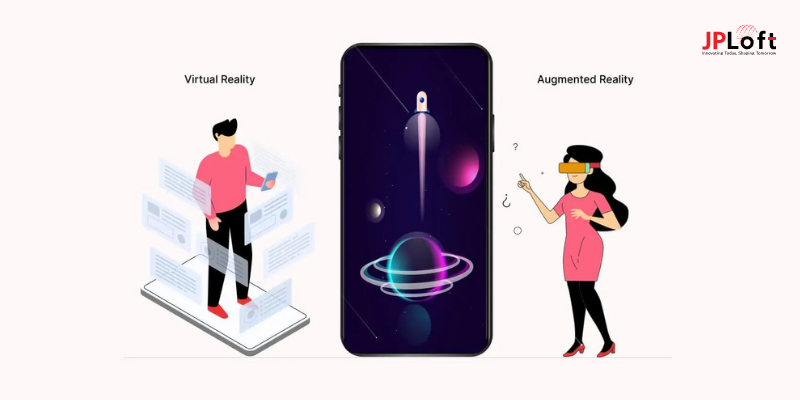Augmented Reality saw a growth in the year 2018. AR has the back support from big techies like Microsoft, Facebook, Apple, Amazon, and Google making serious commitments. It has been predicted that by 2023, more than 2.5 billion people will use the installed user base for AR-supporting products like smart glasses and mobile devices. Also, the revenue will be around $75billion. According to the industry tycoons, AR will play an important role in the pace of industry growth in the year 2020. I have listed the top 5 trends that will rule not only rule 2020 but will also rule the future.
1. Mobile AR is the game changer
After bringing AR to a mass audience of mobile users, Apple secured its AR market leadership as it unveiled ARKit 2.0 at the WWDC (WorldWide Developers Conference) 2018. After this, the mobile AR have not seen back and is growing at its pace. AR-enabled Android smartphones saw a jump from 100 million to 250 million users with the adoption of ARCore-based software on the market. Meanwhile, the abovementioned ARKit delivered augmented reality to 380 million Apple devices by the end of 2018. Major mobile device manufacturers anticipate that they'll see brisk improvements in adoption figures as new phones continue to hit the mobile market.
2. Augmented Reality- best way of shopping
According to reports from Gartner, around 100 million users are expected to utilize AR-enabled shopping technologies in 2019 and is predicted to increase by 2020. The boom in mobile devices that employ AR means the sector is now occupied by robust and mature technologies. Developers, retailers, and customers are now comfortably using them as part of their daily experience. Several companies have gotten out in front of consumer demand for AR shopping. American Apparel, Uniqlo and Lacoste have deployed showrooms and fitting rooms that provide try-before-you-buy options in augmented reality spaces.
3. AR for indoor navigation solutions
One of the most obvious use cases for AR technologies is indoor navigation, and 2020 is the year that is expected to be the average consumer to get their first real taste of its potential in large numbers. ARKit and ARCore based applications for indoor navigation can provide directions in airports, malls, hospital and office campuses. Gatwick Airport has already deployed its own smartphone solution that provides routes to terminals and gates based on a user's flight number. In February 2019, Google began limited testing in Google Maps of AR navigation features. Users can simply take out their phones, point their cameras, and see information about surrounding features in real time. Google's software is likely to move beyond the smartphone space and include integration with smart glasses. Working from an installed base of maps users, AR-powered navigation is expected to move into new territory.
4. Augmented Reality enhanced by AI & ML
The fastest growing technologies- Artificial intelligence (AI) and machine learning (ML) are brought together with AR and Mixed Reality systems and it is a natural extension. 35% of sales on Amazon are derived from its recommendation engine, which depends heavily on machine learning to deliver search results and match advertisers with customers. Moving out of the web browser and into the real world has immense commercial potential. By pairing consumer profiles with ML and AR, retailers can identify customer needs based on their environments and provide them with recommendations. The major innovation will be- Point-and-shoot retail AR solutions. A shopper in a store can get AI-based customer support while walking around. If they have any question regarding price, features or current offers, the answers can be supplied by a chatbot based on natural language processing (NLP) technologies.
5. WebAR
In the web space, Chrome AR is a highly anticipated product of 2019 and will also be of 2020. Instead of needing to use specialized apps, users can simply log on to AR-enabled websites to access the same level of functionality. In order to foster adoption, an unofficial and unsupported version of the WebAR code is made available to developers on GitHub, too. Mozilla is also engaged with WebAR and trying to bring AR solutions to Firefox. As the years are passing the technologies are also growing and also our goals are increasing. So now the goal is to make AR adoption more friction-free with the help of installed user bases of web browser audiences. Apple, Samsung and Microsoft web browser offerings are also rapidly adopting the WebAR standards.
6.Future of Augmented Reality
Experts predict that the AR and VR industry will reach more than $25B by the year 2025—and growth will continue steadily. That's the bright future of augmented reality, and it will be defined by the investments from the following business domains and spheres, which finds its practical potential pretty enticing.








